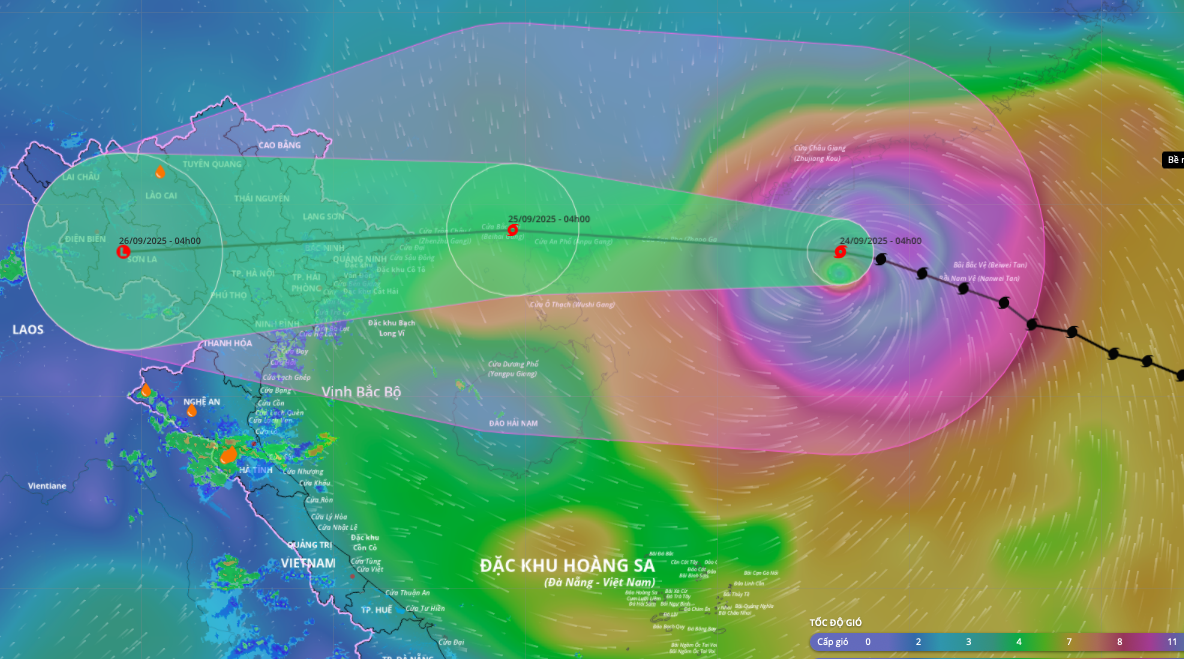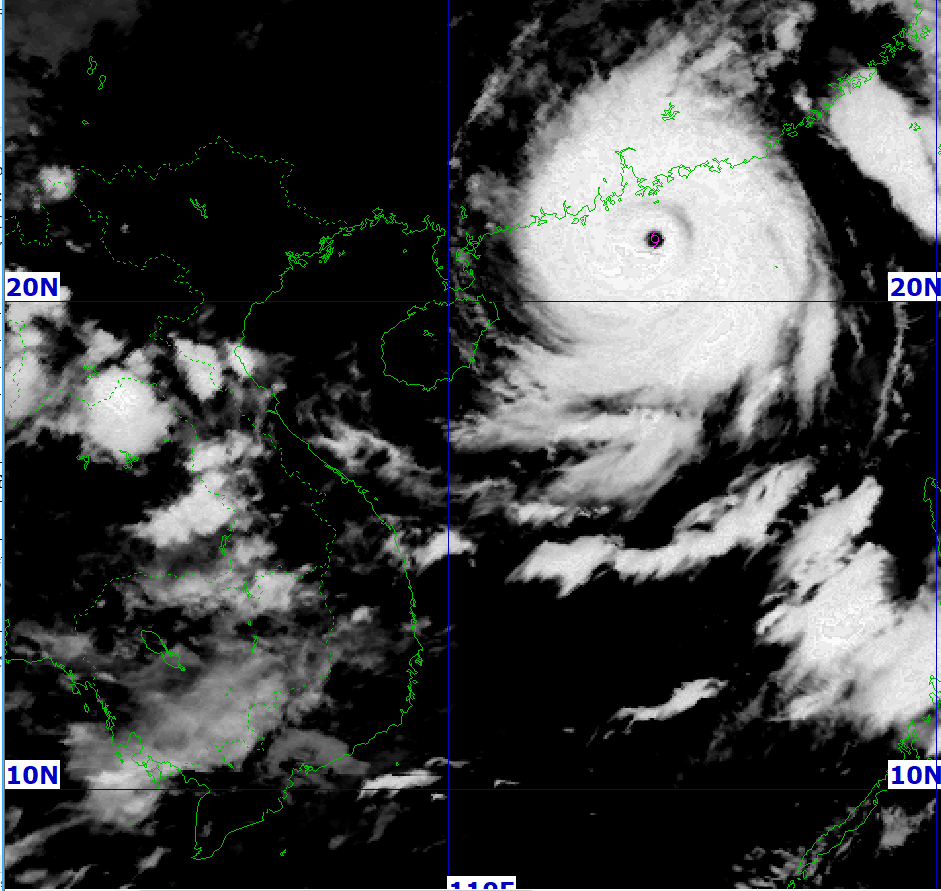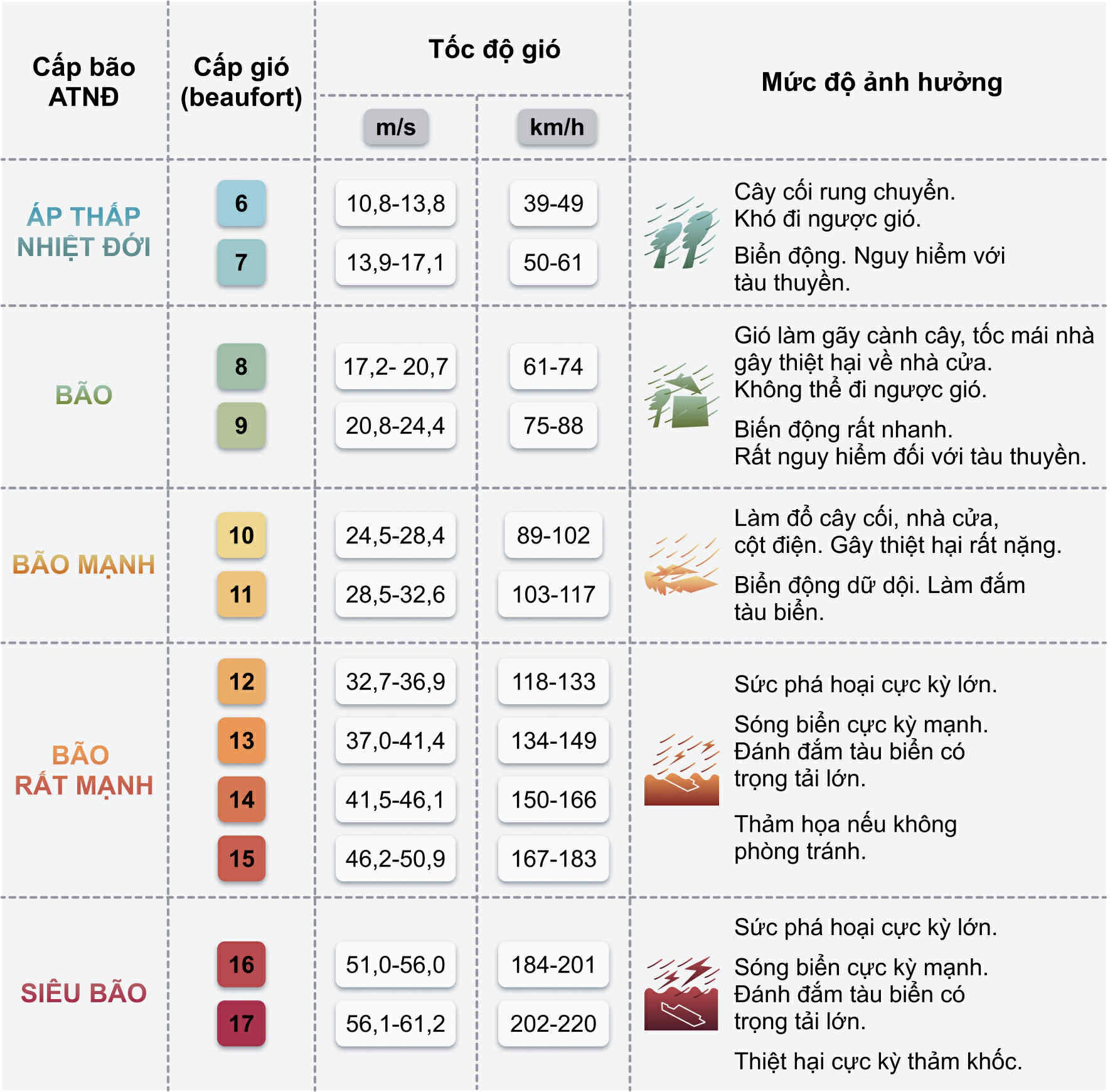The National Center for Hydro-Meteorological Forecasting reported that at 4 a.m., the typhoon was located in the northern waters of the East Sea, about 650 km east of Mong Cai (Quang Ninh), with maximum sustained winds of 201 km/h, category 15-16, gusts of 17, and moving west-northwest at 20 km/h.
By 4 a.m. on 25/9, the typhoon is expected to be in the coastal waters of Guangxi (China), about 150 km east of Mong Cai, with maximum sustained winds of category 11 and gusts of 13. During the day, the typhoon will enter the Gulf of Tonkin and make landfall in Quang Ninh.
By 4 a.m. on 26/9, the typhoon is forecast to weaken into a tropical depression and then a low-pressure area in the Northwest region.
 |
Forecast path and impact area of super typhoon Ragasa, morning of 24/9. Photo: *Disaster Monitoring System* |
The Japan Meteorological Agency forecasts the typhoon's maximum sustained winds have decreased to 180 km/h, and will further decrease to 108 km/h tonight as it enters the Gulf of Tonkin. The Hong Kong Observatory predicts the typhoon will pass north of the Leizhou Peninsula with winds of 120 km/h.
Due to the typhoon's influence, the northern waters of the East Sea are experiencing strong winds of category 10-13, increasing to category 14-16 near the typhoon's center, with gusts exceeding 17, and waves over 10 m high. From noon on 25/9, the eastern waters of the northern Gulf of Tonkin (including Bach Long Vy special administrative-economic unit) will experience increasing winds of category 6-7, with gusts of 9. By nightfall, the northern Gulf of Tonkin (including Bach Long Vy, Van Don, Co To, Cat Hai, and Hon Dau Island) will experience winds increasing to category 8, with waves of 2-4 m, and near the typhoon's center, winds of category 9-11, gusts of 13, and waves of 3-5 m. Coastal areas of Quang Ninh province will experience storm surges of 0.4-0.6 m.
Inland, from near dawn on 25/9, coastal areas from Quang Ninh to Ninh Binh will experience increasing winds of category 6-7, increasing to category 8-9 near the typhoon's center, with gusts of 11. Further inland in the Northeast region, winds will reach category 5, with some areas experiencing category 6 and gusts of 7-8.
From tomorrow night until the end of the night of 26/9, the Northern region, Thanh Hoa, and Nghe An will experience widespread rainfall of 100-250 mm, with some areas receiving over 400 mm. Heavy rain could cause flooding in low-lying areas; flash floods in small rivers and streams; and landslides on steep slopes.
 |
Satellite image of super typhoon Ragasa, morning of 24/9. Photo: *NCHMF* |
The prime minister has issued an official dispatch requesting the secretaries and chairmen of the People's Committees of provinces and cities from Ha Tinh northwards to focus on directing response measures to the super typhoon, prioritizing the safety of the people; the safety of vessels operating at sea and near the coast; and the protection of houses, warehouses, factories, offices, schools, healthcare facilities, dyke systems, and reservoirs.
The government also requested provinces and cities to review their plans and prepare to evacuate and relocate residents to ensure safety before the typhoon makes landfall, and to deploy rescue and relief efforts in case of emergencies.
The prime minister urged ministries and sectors to implement typhoon prevention and control measures according to their assigned tasks, emphasizing the importance of vigilance and preparedness, closely monitoring and updating the situation, and implementing response measures with the utmost determination, anticipating the worst-case scenario to avoid being passive or surprised.
 |
Typhoon wind categories. Graphics: Hoang Khanh |
Typhoon Ragasa formed on 18/9 from a tropical depression off the coast of the Philippines. Three days later, it intensified by eight categories to become a super typhoon and reached its peak intensity of category 17 with winds of 221 km/h on the evening of 22/9 upon entering the East Sea. Ragasa has surpassed Yagi in 2024 to become the strongest typhoon in the East Sea in the past 70 years.
Gia Chinh












